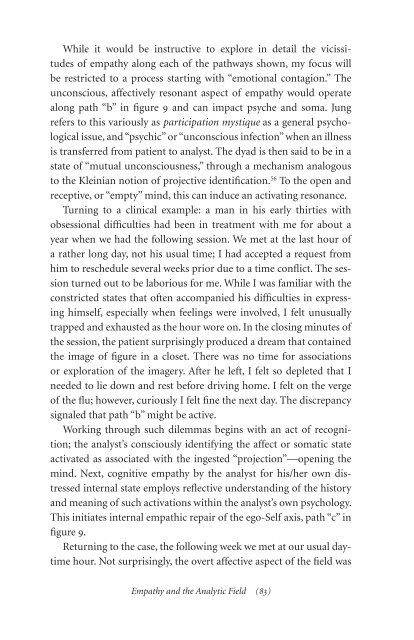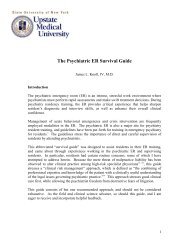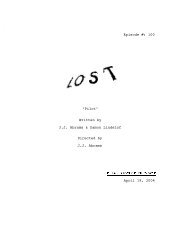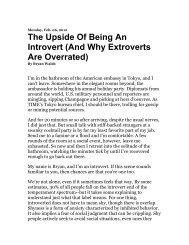Synchronicity Cambray
Synchronicity Cambray
Synchronicity Cambray
You also want an ePaper? Increase the reach of your titles
YUMPU automatically turns print PDFs into web optimized ePapers that Google loves.
While it would be instructive to explore in detail the vicissitudes<br />
of empathy along each of the pathways shown, my focus will<br />
be restricted to a process starting with “emotional contagion.” The<br />
unconscious, affectively resonant aspect of empathy would operate<br />
along path “b” in figure 9 and can impact psyche and soma. Jung<br />
refers to this variously as participation mystique as a general psychological<br />
issue, and “psychic” or “unconscious infection” when an illness<br />
is transferred from patient to analyst. The dyad is then said to be in a<br />
state of “mutual unconsciousness,” through a mechanism analogous<br />
to the Kleinian notion of projective identification. 56 To the open and<br />
receptive, or “empty” mind, this can induce an activating resonance.<br />
Turning to a clinical example: a man in his early thirties with<br />
obsessional difficulties had been in treatment with me for about a<br />
year when we had the following session. We met at the last hour of<br />
a rather long day, not his usual time; I had accepted a request from<br />
him to reschedule several weeks prior due to a time conflict. The session<br />
turned out to be laborious for me. While I was familiar with the<br />
constricted states that often accompanied his difficulties in expressing<br />
himself, especially when feelings were involved, I felt unusually<br />
trapped and exhausted as the hour wore on. In the closing minutes of<br />
the session, the patient surprisingly produced a dream that contained<br />
the image of figure in a closet. There was no time for associations<br />
or exploration of the imagery. After he left, I felt so depleted that I<br />
needed to lie down and rest before driving home. I felt on the verge<br />
of the flu; however, curiously I felt fine the next day. The discrepancy<br />
signaled that path “b” might be active.<br />
Working through such dilemmas begins with an act of recognition;<br />
the analyst’s consciously identifying the affect or somatic state<br />
activated as associated with the ingested “projection”—opening the<br />
mind. Next, cognitive empathy by the analyst for his/her own distressed<br />
internal state employs reflective understanding of the history<br />
and meaning of such activations within the analyst’s own psychology.<br />
This initiates internal empathic repair of the ego-Self axis, path “c” in<br />
figure 9.<br />
Returning to the case, the following week we met at our usual daytime<br />
hour. Not surprisingly, the overt affective aspect of the field was<br />
Empathy and the Analytic Field ( 83 )









